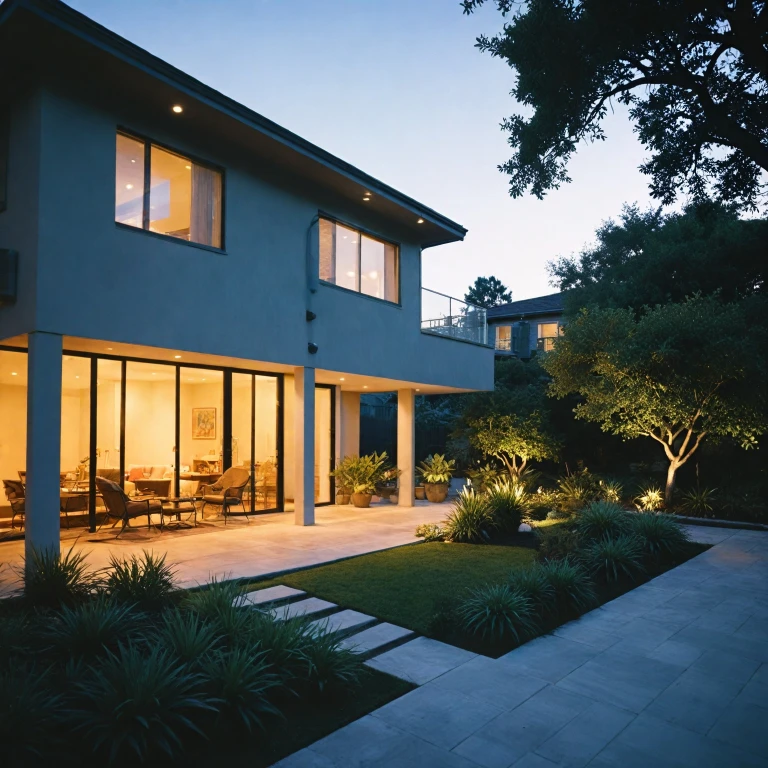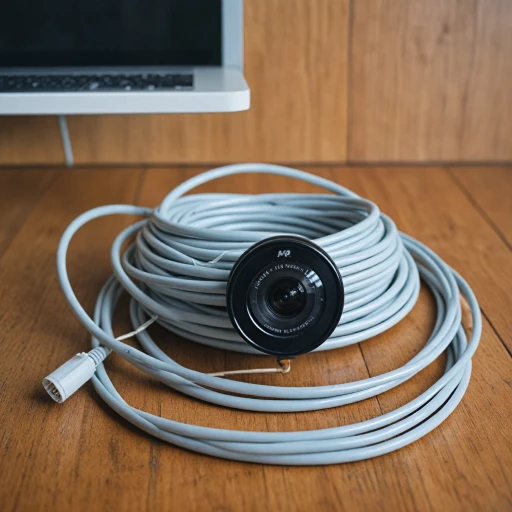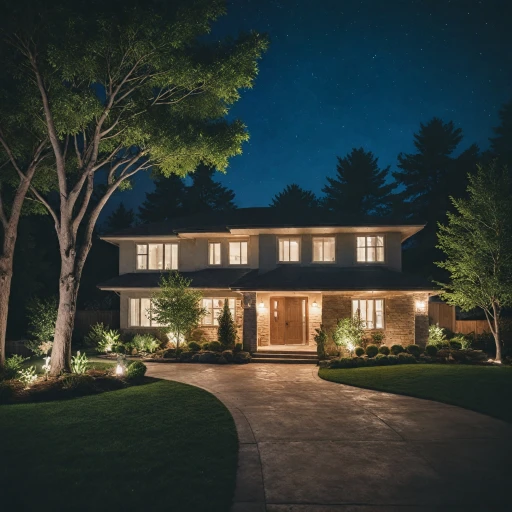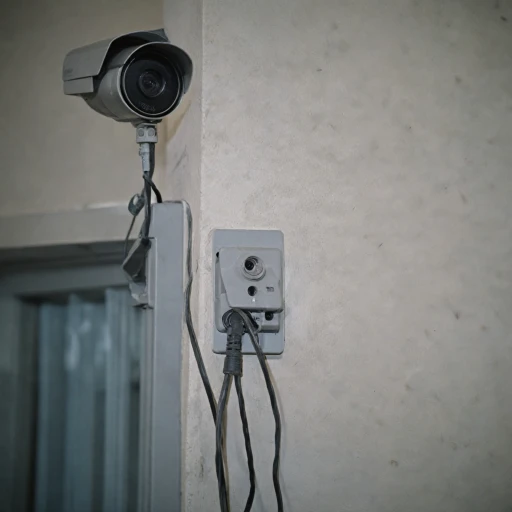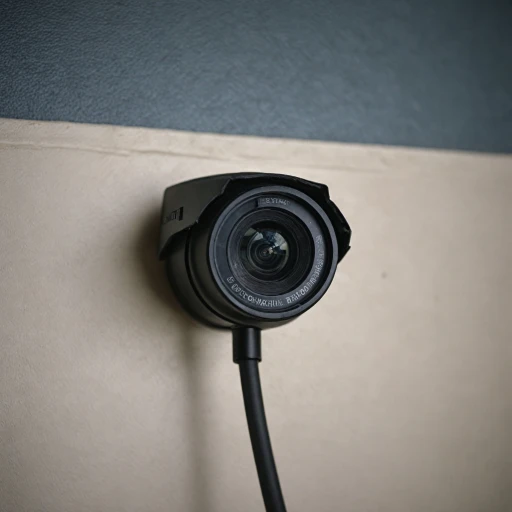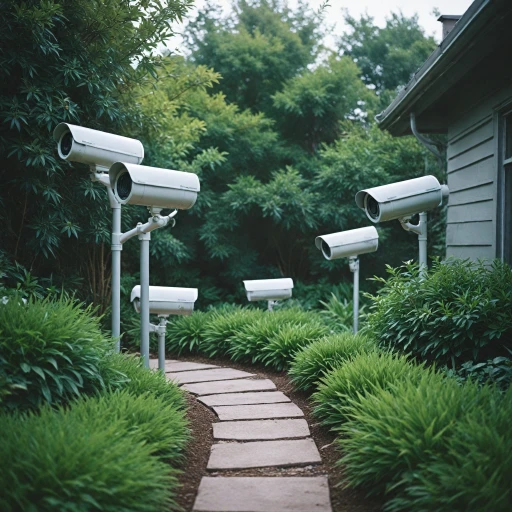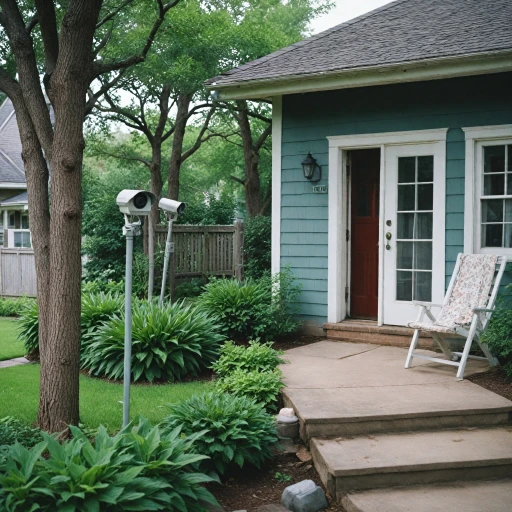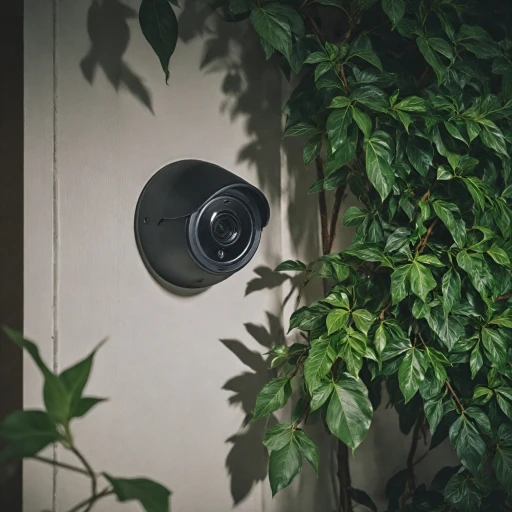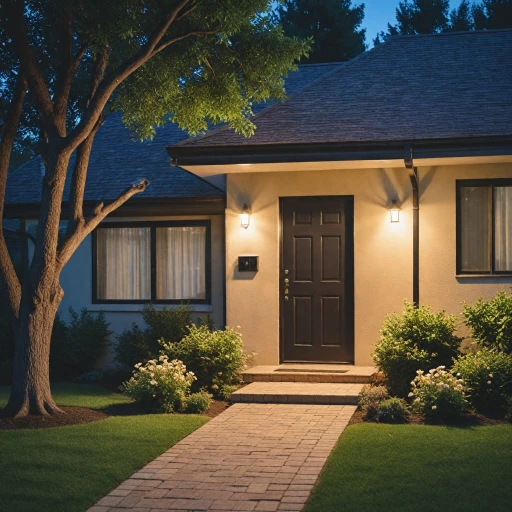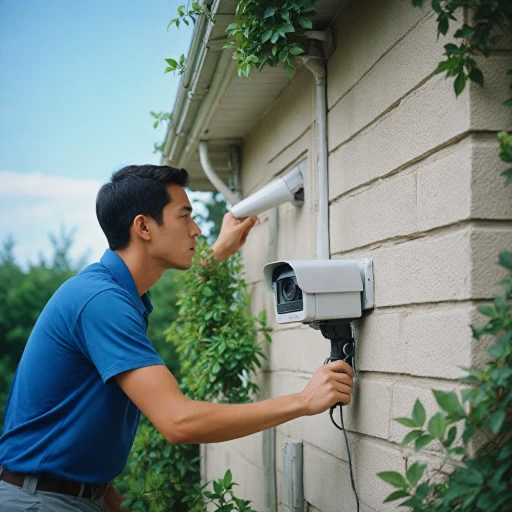
Understanding NVR Systems
Demystifying NVR Technology
Network Video Recorder (NVR) systems are pivotal in the home security landscape, acting as the backbone for many advanced security camera setups. Unlike traditional DVR systems, which rely on coaxial cables, NVR systems utilize IP cameras connected via Ethernet. This allows for superior video quality and a more flexible setup, accommodating both wired and wireless security cameras. A major advantage of NVR-based systems is their support for Power over Ethernet (PoE). With PoE, cameras receive both power and data through a single cable, simplifying installation and reducing the need for extensive wiring. This can also improve reliability and efficiency in your home security network, as fewer cables mean fewer potential points of failure. NVR systems come in various configurations, typically categorized by their channel capacity. For instance, an "8-channel NVR" can support up to 8 cameras, making it a suitable choice for medium-sized homes requiring comprehensive coverage. The flexibility of channel NVR systems enables homeowners to start with fewer cameras and scale up as necessary, striking a balance between coverage needs and budget considerations. In addition to ease of use, NVR systems excel in recording high-definition video. They support high-resolution cameras, offering clear and detailed footage, which is invaluable during critical security events. With features like motion detection and night vision, modern NVR camera systems provide round-the-clock surveillance, ensuring your premises are protected day and night. For homeowners, budget is often a significant consideration when selecting a camera system. The price of an NVR system can vary based on several factors, including storage capacity, the number of supported channels, and additional smart features. It's crucial to evaluate the current price against the original price and to look for a system with a special price offer. Additionally, understanding the importance of security camera cables is crucial when evaluating different NVR systems. For more in-depth insights, you can explore this detailed guide on security camera cables, which explains how they contribute to the performance and reliability of security setups. Choosing an NVR-integrated security solution gives homeowners the flexibility to add and compare features that best suit their security needs, ensuring peace of mind and robust home protection.Benefits of Using Home Security Cameras with NVR
Advantages of Integrating NVR with Home Security Cameras
When it comes to enhancing your home security, integrating cameras with a Network Video Recorder (NVR) system offers several compelling benefits. These systems provide a comprehensive solution that combines advanced technology with ease of use, making them a popular choice for homeowners looking to bolster their security measures.
Enhanced Video Storage and Management
One of the primary advantages of using NVR-integrated cameras is the efficient video storage and management they offer. NVR systems typically come with significant storage capacity, allowing you to record and store high-definition video footage for extended periods. This is particularly beneficial for reviewing past events or incidents. Additionally, the digital nature of NVR systems ensures that video quality remains high, even when stored for long durations.
Improved Video Quality and Flexibility
NVR systems are known for delivering superior video quality compared to traditional DVR systems. They support high-resolution cameras, ensuring that every detail is captured clearly. This is crucial for identifying faces or license plates in security footage. Moreover, NVR systems offer flexibility in terms of camera placement, as they can support both wired and wireless cameras, including PoE cameras that simplify installation by using a single cable for power and data transmission.
Scalability and System Expansion
Another significant benefit of NVR-integrated cameras is their scalability. As your security needs grow, you can easily add more cameras to your existing system. Most NVR systems support multiple channels, allowing you to expand your security coverage without replacing the entire system. This makes them a cost-effective solution for homeowners who anticipate future expansion.
Advanced Features and Smart Integration
NVR systems often come equipped with advanced features such as motion detection, night vision, and smart home integration. These features enhance the overall security of your home by providing real-time alerts and the ability to monitor your property remotely. The integration with smart home systems allows for seamless control and monitoring through your smartphone or other smart devices.
For a deeper understanding of how NVR systems work and their role in home security, you can explore more about understanding the role of BNC cables in home security cameras.
Key Features to Look for in NVR-Integrated Cameras
Essential Attributes to Consider for NVR-Integrated Cameras
When considering NVR-integrated cameras for enhancing your home security, it is crucial to focus on certain features that can maximize efficiency and utility. Understanding these key attributes will assist in making an informed decision to best suit your security needs.- Video Resolution: One of the foremost aspects to consider is video resolution. High-definition cameras provide clearer and more detailed images, which can be vital in identifying intruders. Selecting a system that supports at least 1080p resolution is often recommended.
- Night Vision: Effective home security systems must be capable during both day and night. Infrared night vision cameras enable you to monitor activities even in low light, safeguarding your premises around the clock.
- Storage Options: Consider the video storage capabilities of your NVR system. Some options can offer expansive storage through HDDs, while others may provide cloud storage solutions. Assessing storage needs is essential to ensure you do not run out of space when recording crucial footage.
- PoE Capability: Power over Ethernet (PoE) technology minimizes the need for additional power cables by transmitting both data and power through a single cable, simplifying the setup and installation process. This can be a significant advantage in creating a neat, manageable setup.
- Channel Capacity: Depending on the size of your property, you may need different numbers of cameras. Ensure that your NVR system supports a sufficient channel number to accommodate all areas of your home that require surveillance.
- Motion Detection: Integration with motion detection can alert you to any suspicious activity. Smart detection features can also help reduce false alarms by distinguishing between humans and other moving objects.
- Smart Features: Modern NVR security systems often come with smart capabilities like mobile alerts and video analytics. These features enhance responsiveness and allow remote monitoring from mobile apps or computers, keeping you connected no matter where you are.
- Price Consideration: Prices for NVR camera systems can vary widely, so it’s vital to balance the cost against the available features. Comparing regular prices, current prices, and any special offers can help secure the best deal for your particular needs.
- Wireless Connectivity: Although PoE is favored for reliability, exploring wireless options might be beneficial if cabling poses a challenge. Wireless systems offer ease of installation but must be evaluated for network reliability and security.
Installation and Setup Considerations
Setting Up Your NVR-Integrated Camera System
When it comes to installing your NVR-integrated camera system, several aspects need careful consideration to ensure optimal performance and security:
- Planning the Layout: Start by mapping out areas around your home that require surveillance. Consider entrances, driveways, and blind spots. The objective is to cover key areas while avoiding obstructions that might hinder the camera’s view.
- Wired vs. Wireless: Decide whether a wired or wireless system best suits your needs. While wired connections using PoE NVR systems offer stable data transmission and power supply, wireless systems provide flexibility in positioning cameras. The choice will largely depend on whether your wiring infrastructure supports such installations.
- Channel NVR Capacity: Your NVR system's capacity significantly impacts the number of cameras you can add. It is crucial to check the channel NVR capacity and ensure it can handle your desired security setup.
- Video Storage Solutions: Determine your video storage preferences. With advances in storage solutions, few options include local storage within the NVR, cloud services, or a hybrid approach. Consider available options' price points, from the original price to special prices, ensuring it meets your detection and retention needs.
- Lens and Camera Features: Ensure the cameras are equipped with necessary features such as night vision, smart detection, and spotlight capabilities for added security. A broad lens may offer a wide field of view, while specialized features enhance performance under specific conditions.
- Setting Up the Software: Most NVR security systems come with a user-friendly interface. Familiarize yourself with configuring the software to best utilize your cameras’ capabilities and system alerts.
- Professional Installation: While DIY installation is feasible for enthusiasts, hiring professional help ensures that the setup is secure and that potential technical challenges are promptly addressed.
By focusing on these key aspects, homeowners can create a robust security network tailored to their specific needs without unnecessary adjustments or additional costs over time. Remember, a well-planned installation is pivotal in utilizing your NVR camera systems effectively and harnessing their full potential for home security.
Common Challenges and Solutions
Addressing Installation and Setup Hurdles
Setting up a camera system can present several challenges, particularly for those new to NVR-integrated systems. However, understanding these hurdles and how to tackle them can ensure a smooth installation process.- Compatibility Issues: One of the initial considerations for security cameras is ensuring compatibility with your existing home network. A POE NVR system often simplifies this setup as it uses a single cable for both power and video transmission. It's important to verify that your current internet setup can support the camera system requirements.
- Network Bandwidth: Another common challenge is managing network bandwidth. When installing a new channel NVR camera system, consider the number of cameras you intend to utilize. Every additional camera will increase your network's bandwidth usage. Opting for smart cameras with efficient video compression can help manage this load.
- Positioning and Coverage: Proper placement of cameras is crucial for optimal coverage and security. Factors such as lighting conditions, field of view, and potential blind spots should be accounted for. Incorporating wireless security cameras with features like night vision and spotlight can enhance surveillance even in low-light environments.
- Storage Concerns: Storage can become a challenge due to the amount of video footage captured. Many NVR camera systems allow for customizable storage options, including cloud storage or expandable hard drive setups. Evaluating the storage needs and potential price changes can help avoid exorbitant costs.
- Power Source Arrangements: Though POE cameras simplify power and data connectivity, some users might face power source availability issues for additional cameras. Exploring options such as battery-operated or standalone wireless systems can provide flexibility.
- Practical Installation: DIY enthusiasts might find the installation straightforward, but professional assistance may be beneficial to ensure proper setup and integration of the NVR security system. Weighing the regular price against the expertise gained from professional installations can offer a practical solution.
Future Trends in Home Security Technology
Emerging Trends and Innovations
As the home security landscape continues to evolve, several promising trends and technological advancements are shaping the future of NVR-integrated camera systems. With constant innovations, homeowners are now equipped with an array of options to bolster their security measures.- AI-Driven Intelligence: Security cameras are increasingly being paired with AI technology to enhance threat detection capabilities. This integration allows for more accurate motion detection and identification, reducing false positives and providing smarter notifications to homeowners.
- Advanced Video Analytics: With the integration of video analytics, cameras can now offer insights into unusual activities or patterns within the home environment. These analytics can assist in identifying potential security breaches before they occur.
- Greater Connectivity Options: The trend towards wireless and PoE cameras allows for easier installation and scalability of security systems. These systems provide more flexibility and often come with enhanced night vision capabilities.
- Seamless Integration with Smart Home Devices: As homes become smarter, it’s critical for security systems to integrate with other smart devices. This ensures a consolidated ecosystem where cameras with NVR can communicate with other home gadgets, providing real-time alerts and responses.
- Improved Storage Solutions: With higher-resolution cameras being the norm, there is a growing need for enhanced storage solutions. Many NVR systems now offer cloud storage options in addition to traditional local storage, allowing for greater flexibility and accessibility.
- Cost-Effective Solutions: As competition and technological advancements drive prices down, many high-quality systems are becoming more affordable. This makes advanced security accessible to a broader audience without compromising on the effectiveness or reliability.

